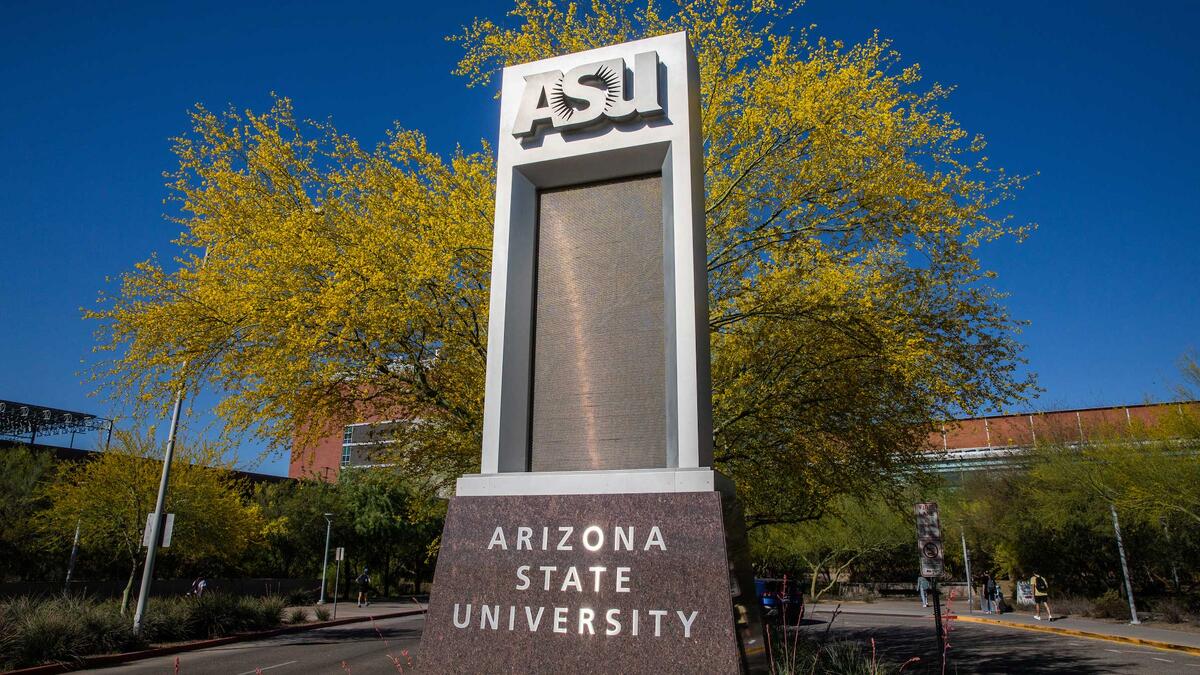ASU awarded lead of new National Science Foundation I-Corps Hub

Photo by Deanna Dent/ASU
The U.S. National Science Foundation has announced the addition of five new NSF Innovation Corps (I-Corps) Hubs to its National Innovation Network. Arizona State University is the lead institution for one of the new hubs: the Desert and Pacific region.
The other universities joining the Desert and Pacific Hub are: the University of Arizona; Northern Arizona University; the University of California, San Diego; the University of Hawaii; Boise State University; the University of Idaho; and the University of Nevada, Las Vegas.
“We are honored to take a leadership role to convene and collaborate with the outstanding universities in the Desert and Pacific of the NSF National Innovation Network,” said Executive Vice President and University Provost Nancy Gonzales, who serves as principal investigator on the I-Corps Hub grant.
“One of the ASU Charter principles is to advance research and discovery of public value. Our work in this I-Corps Hub will help us accelerate this mission by taking the incredible innovations and solutions that our faculty members produce and translating them into entrepreneurial ventures that will create jobs and deliver solutions that benefit the state, our nation and our globe.”
Ann McKenna, vice dean of strategic advancement and a professor in the Ira A. Fulton Schools of Engineering, will serve as a co-principal investigator and research and evaluation lead; Zachary Holman, associate professor in the Fulton Schools of Engineering, will serve as a co-principal investigator and faculty lead; and Ji Mi Choi, vice president of ASU Knowledge Enterprise and founding executive director of the J. Orin Edson Entrepreneurship + Innovation Institute, will serve as the Desert and Pacific Hub director.
Established in 2011, the I-Corps program is designed to support the commercialization of deep technologies. Approximately 2,800 NSF I-Corps teams have participated in the program, including ASU, which was previously named an I-Corps Site.
Examples of ASU technologies that have advanced through the I-Corps program include AI-powered traffic cameras and a virtual lab platform for computing research and education.
“Through the ASU I-Corps Site, we have been able to support the participation of nearly 200 I-Corps teams, and we are looking forward to supporting even more teams across our institutions and regions to exponentially grow the impact of use-inspired research,” said Choi, who served as a principal investigator of ASU’s I-Corps Site.
“This is a significant complement to the suite of resources, service and support we have to support university-driven innovation and entrepreneurship for societal benefit.”
This new designation will expand the scope and scale of economic and entrepreneurial output. Each I-Corps Hub comprises a regional alliance of at least eight universities and is funded up to $3 million per year for five years.
"Each regional I-Corps Hub provides training essential in entrepreneurship and customer discovery, leading to new products, startups and jobs,” said Erwin Gianchandani, NSF assistant director for technology, innovation and partnerships.
The first five I-Corps Hubs were awarded in 2021, and each is expanding its reach this year by adding a new partner institution.
I-Corps Hubs work to:
- Create and implement tools, resources and training activities that enhance the nation's innovation capacity.
- Identify, develop and support promising research that can generate economic value.
- Gather, analyze, evaluate and utilize the data and insights resulting from the experiences of those participating in local, regional and national I-Corps programs.
- Provide opportunities to diverse communities of innovators.
- Share and leverage effective innovation practices on a national scale to impact economic growth and improve quality of life throughout the nation.
The four other new hubs and participating institutions are as follows:
Interior Northeast region
- Cornell University — lead
- Dartmouth College
- Binghamton University
- Rochester Institute of Technology
- Syracuse University
- University at Buffalo
- University of Pittsburgh
- University of Rochester
- University of Vermont
- West Virginia University
Southwest region
- University of Texas at Austin — lead
- Louisiana State University
- New Mexico State University
- Oklahoma State University
- Rice University
- Texas A&M University
- University of Texas at El Paso
- University of Texas at San Antonio
Mid-South region
- Vanderbilt University — lead
- George Mason University
- Jackson State University
- Meharry Medical College
- Tennessee State University
- University of Kentucky
- University of Louisville
- University of Tennessee, Knoxville
- University of Virginia
Great Plains region
- North Dakota State University — lead
- Dakota State University
- South Dakota School of Mines & Technology
- South Dakota State University
- University of Nebraska Omaha
- University of North Dakota
- University of South Dakota
- University of Wyoming
The institutions joining the original five hubs are:
- Colorado State University, West region
- Drexel University, Northeast region
- Hampton University, Mid-Atlantic region
- Rensselaer Polytechnic Institute, New York region
- University of Iowa, Great Lakes region
More Science and technology

Applied Materials invests in ASU to advance technology for a brighter future
For nearly 60 years, global giant Applied Materials has been hard at work engineering technology that continues to change how microchips are made.Their products power everything from flat-panel…

Meet ASU engineering students who are improving health care, computing and more
Furthering knowledge of water resource management, increasing the efficiency of manufacturing point-of-care health diagnostic tools and exploring new uses for emerging computer memory are just some…

Turning up the light: Plants, semiconductors and fuel production
What can plants and semiconductors teach us about fuel production?ASU's Gary Moore hopes to find out.With the aim of learning how to create viable alternatives to fossil-based fuels, Moore — an…

